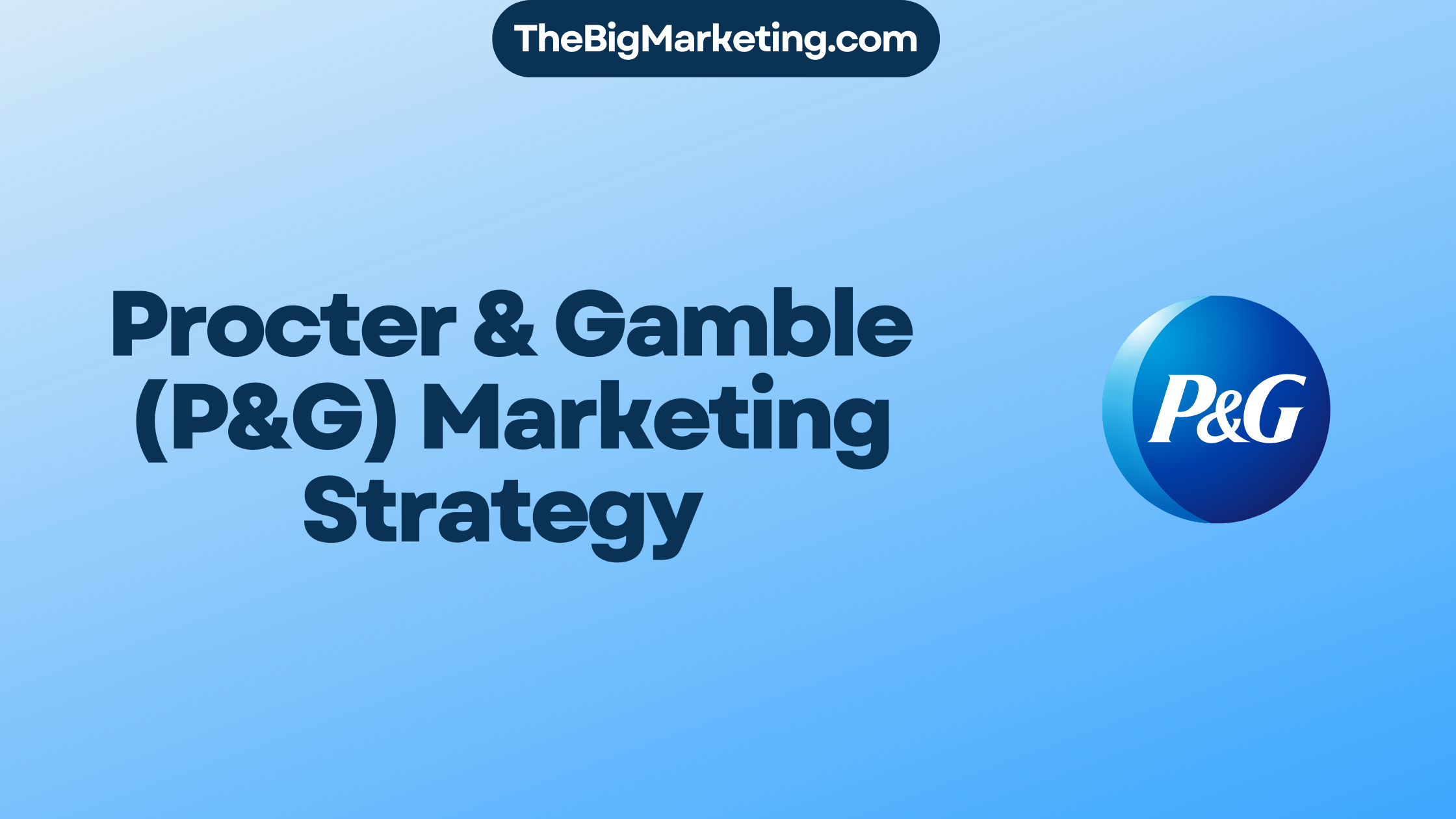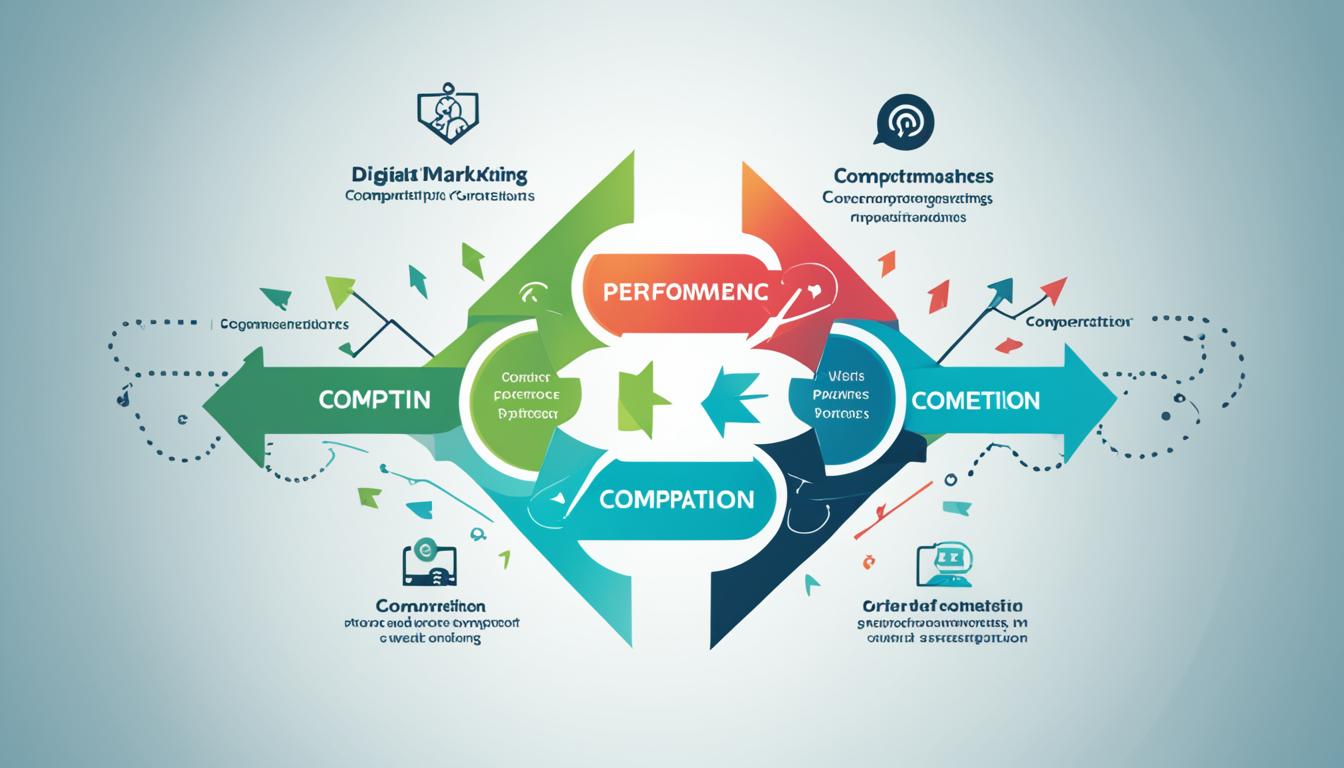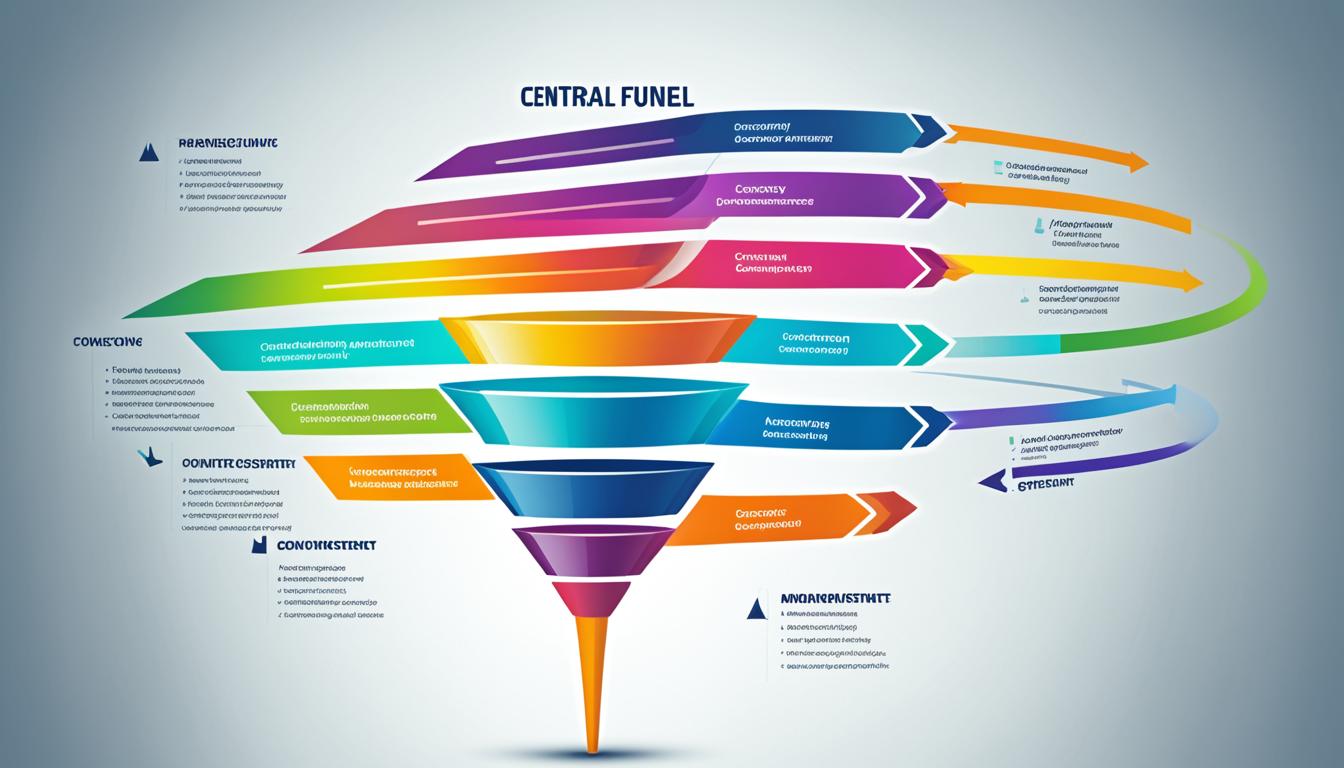Growth hacking and traditional marketing are two distinct approaches to driving business growth through digital marketing strategies. While traditional marketing relies on established principles and practices, growth hacking focuses on unconventional techniques, data-driven decisions, and rapid experimentation.
In terms of online advertising techniques, growth hacking emphasizes agility and flexibility, constantly testing and refining strategies to optimize results. On the other hand, traditional marketing follows a more structured and planned approach, leveraging established channels and tactics to promote products or services.
In this guide, we will explore the key differences and similarities between growth hacking and traditional marketing, and how they can be combined to create a holistic marketing strategy. From SEO optimization tactics to social media engagement and content marketing approaches, we will delve into various aspects of both approaches, highlighting their strengths and respective customer acquisition methods.
Key Takeaways:
- Growth hacking focuses on rapid and sustainable growth through experimentation and innovation.
- Traditional marketing relies on established principles and practices for increasing brand awareness and loyalty.
- Both growth hacking and traditional marketing utilize data-driven decision-making.
- Combining growth hacking and traditional marketing can create a more comprehensive marketing strategy.
- Understanding the differences and similarities between growth hacking and traditional marketing is crucial for achieving sustainable business growth.
What is Growth Hacking?
Growth hacking is a dynamic and innovative marketing approach aimed at achieving rapid and scalable business growth through experimentation, data-driven decisions, and unconventional strategies. By leveraging various marketing channels, tactics, and tools, growth hackers aim to acquire, retain, and monetize customers effectively. They constantly test and refine their methods to find the most efficient ways to drive growth.
One of the core principles of growth hacking is the emphasis on rapid testing and iteration. Growth hackers rely on data analysis to identify what works and what doesn’t, enabling them to optimize their marketing efforts for maximum impact. By scaling the tactics that prove successful, growth hackers can accelerate customer acquisition, retention, and monetization.
Growth Hacking Tactics and Tools
Growth hackers employ a wide range of tactics and tools to achieve their objectives. These include:
- Referrals: Encouraging existing customers to refer their friends, family, and colleagues to become new customers.
- Gamification: Using game-like elements and mechanics to engage and motivate customers to take desired actions.
- Incentives: Offering rewards or benefits to customers for completing certain actions or achieving specific milestones.
These tactics aim to create viral or word-of-mouth effects, effectively expanding the reach and impact of the marketing efforts. Growth hackers also leverage various marketing channels, such as social media, content marketing, search engine optimization (SEO), and partnerships, to target and engage their desired audience.
Achieving Acquire, Retain, and Monetize
The ultimate goal of growth hacking is to not only acquire customers but also retain them and monetize their value. Growth hackers use their testing and data-driven approach to optimize the entire customer journey, from initial acquisition to retention and monetization.
By continuously analyzing customer behavior and optimizing conversion rates, growth hackers can improve customer retention, increase customer lifetime value, and maximize revenue. The combination of innovative tactics and analytical insights enables growth hackers to build sustainable business growth and create loyal customer relationships.
Here is an image illustrating the growth hacking process:
| Growth Hacking Process | Description |
|---|---|
| Experimentation | Constantly test different marketing strategies and tactics to find what works best. |
| Data-Driven Decisions | Use data analysis and insights to make informed decisions and optimize marketing efforts. |
| Scaling | Scale the successful tactics to achieve rapid and scalable growth. |
Growth hacking represents a paradigm shift in marketing, focusing on agility, innovation, and data to drive business growth. By combining creative tactics, analytical insights, and a relentless focus on rapid experimentation, growth hackers can unlock new opportunities for acquiring, retaining, and monetizing customers.
What is Traditional Marketing?
Traditional marketing refers to a planned and structured approach to promoting a product or service to a specific target audience. Traditional marketers rely on established principles, frameworks, and best practices to design and execute their marketing campaigns. They make use of various paid media channels, including TV ads, radio ads, print ads, and online ads, to reach a wide and diverse audience.
The success of traditional marketing campaigns is measured using metrics such as impressions, reach, and conversions. These metrics provide valuable insights into the effectiveness and impact of the marketing initiatives. By analyzing these metrics, marketers can assess the performance of their campaigns, make data-driven decisions, and optimize their strategies for better results.
Traditional marketing takes a structured and planned approach to promote products or services, ensuring that the right message is delivered to the right audience through the most appropriate channels. By leveraging paid media platforms, marketers can effectively increase brand visibility, attract potential customers, and drive conversions.
For a better understanding of traditional marketing, let’s take a look at the following table, which highlights some key aspects of this approach:
| Traditional Marketing | Key Aspects |
|---|---|
| Planned approach | Marketers strategically plan their marketing campaigns and activities based on established principles and best practices. |
| Structured approach | Traditional marketing follows a structured process in promoting products or services, ensuring consistency and coherence in messaging. |
| Promote product | The primary goal of traditional marketing is to promote a product or service to a target audience, creating awareness and generating interest. |
| Target audience | Traditional marketing focuses on reaching a specific target audience that is likely to be interested in the product or service being promoted. |
| Paid media | Marketers invest in paid media channels, such as TV ads, radio ads, print ads, and online ads, to effectively reach a broader audience. |
| Metrics | Marketers measure the success of their traditional marketing campaigns using metrics such as impressions, reach, and conversions. |
By employing a planned and structured approach, leveraging paid media channels, and using relevant metrics to measure performance, traditional marketing can help businesses effectively promote their products or services and reach their target audience.
How are They Different?
The main difference between growth hacking and traditional marketing lies in their goals and approaches. Growth hacking aims to achieve rapid and sustainable growth, while traditional marketing focuses on increasing brand awareness and loyalty.
Growth hacking is characterized by an agile and flexible mindset, constantly experimenting with new strategies and tactics to drive rapid growth. It relies on innovative and unconventional methods to acquire and retain customers, such as gamification, referral programs, and incentives.
On the other hand, traditional marketing takes a more stable and consistent approach. It relies on established principles and practices to promote products and services, leveraging channels like paid media, TV, radio, print, and online ads to reach a wide audience.
Growth hacking is highly analytical and data-driven, making data-backed decisions to optimize campaigns and achieve better results. It focuses on finding the product-market fit and tailoring the customer journey accordingly.
Traditional marketing, however, takes a more strategic approach, considering the entire customer journey and aiming to increase brand visibility and loyalty through targeted messaging and consistent branding.
Overall, growth hacking is experimental and innovative, constantly adapting to changing market dynamics, while traditional marketing is analytical and strategic, focusing on long-term goals and customer satisfaction.
Comparison between Growth Hacking and Traditional Marketing:
| Growth Hacking | Traditional Marketing |
|---|---|
| Goal | Rapid growth |
| Approach | Agile, flexible, experimental, innovative |
| Methods | Unconventional, data-driven |
| Focus | Product-market fit |
| Customer Journey | Targeted messaging, branding |
| Mindset | Adaptive, constantly evolving |
| Stability | Less stable, dynamic |
How are They Similar?
Despite their differences, growth hacking and traditional marketing share common objectives in driving business growth and acquiring customers. Both approaches aim to increase brand visibility, attract and retain customers, and boost revenue. They utilize various channels and tactics to reach their target audience, including:
- Social media: Leveraging platforms like Facebook, Instagram, and Twitter to engage with customers and promote products/services.
- Content marketing: Creating valuable and informative content to attract and educate potential customers.
- SEO (Search Engine Optimization): Optimizing websites and online content to rank higher in search engine results and increase organic traffic.
- Conversion optimization: Analyzing user behavior and optimizing the customer journey to improve the conversion rate.
- Retention rates: Implementing strategies to retain existing customers and encourage repeat purchases.
Both growth hacking and traditional marketing involve analyzing customer behavior and feedback to refine strategies and optimize conversion and retention rates. By understanding customer preferences and needs, businesses can tailor their marketing efforts to maximize engagement and satisfaction. Feedback from customers helps in identifying areas of improvement and delivering better products/services.
Comparison of Growth Hacking and Traditional Marketing Approaches
| Growth Hacking | Traditional Marketing |
|---|---|
| Focuses on rapid and sustainable growth | Emphasizes brand awareness and loyalty |
| Utilizes unconventional and innovative tactics | Relies on established principles and practices |
| Agile, flexible, and experimental | Stable, consistent, and strategic |
| Targets specific customer segments | Targets a broader audience |
| Relies on data-driven decisions and rapid testing | Uses metrics like impressions, reach, and conversions |
How to Combine Them?
Growth hacking and traditional marketing are not mutually exclusive. In fact, combining these two approaches can create a more holistic and effective marketing strategy that leverages their respective strengths. Here are a few ways to combine growth hacking and traditional marketing for optimal results:
1. Build a Strong Brand Identity
Traditional marketing can be used to establish a strong brand identity and reputation. By leveraging traditional marketing channels such as TV, radio, print, or online ads, you can reach a wide audience and create brand awareness. Consistent messaging and storytelling can help build credibility and trust with your target audience.
2. Leverage Existing Customers
Growth hacking strategies can be employed to leverage your existing customer base and network. Word-of-mouth referrals, customer testimonials, and incentivized referral programs can help generate organic growth. By tapping into the power of your satisfied customers, you can expand your reach and acquire new customers more effectively.
3. Test and Validate Product Ideas
One of the core principles of growth hacking is rapid testing and experimentation. By combining growth hacking techniques with traditional marketing, you can test and validate new product ideas before investing heavily in traditional marketing campaigns. This allows you to optimize your offerings and ensure that you have a product-market fit.
4. Scale and Sustain Growth
Once you have validated your product ideas and achieved a product-market fit, traditional marketing can be employed to scale and sustain your growth. By leveraging traditional marketing channels alongside your growth hacking strategies, you can reach a larger audience and drive consistent growth over time.
By combining growth hacking and traditional marketing, you can create a comprehensive marketing strategy that maximizes your business growth potential. It is important to adapt and iterate your approach based on your target audience, industry, and available resources. Remember, there is no one-size-fits-all solution, so always test, analyze, and refine your strategies to achieve the best possible results.
How to Learn More?
For those looking to dive deeper into the world of growth hacking and traditional marketing, there are numerous online resources available. These resources provide valuable insights, techniques, and case studies that can enhance your understanding of both approaches. Whether you prefer reading books, browsing informative blogs, listening to podcasts, or taking structured courses, there’s something for everyone.
- Books: There are several books written by industry experts that delve into the concepts and strategies of growth hacking and traditional marketing. Some recommended titles include:
- “Growth Hacker Marketing” by Ryan Holiday
- “Hooked: How to Build Habit-Forming Products” by Nir Eyal
- “The Lean Startup” by Eric Ries
- Blogs: Many blogs publish regular content on growth hacking and traditional marketing. These blogs often feature practical advice, case studies, and the latest industry insights. Some popular blogs to follow include:
- GrowthHackers
- Hacker Noon
- Neil Patel’s Blog
- Podcasts: Podcasts can be a great way to learn on-the-go. There are several podcasts that cover growth hacking and traditional marketing topics, featuring interviews with industry leaders and in-depth discussions. Some highly recommended podcasts include:
- “The Growth Podcast” by HubSpot
- “Marketing School” by Neil Patel and Eric Siu
- “The Tim Ferriss Show” by Tim Ferriss (covers a wide range of topics, including marketing)
- Courses: If you prefer a more structured approach to learning, there are many online courses available that cover growth hacking and traditional marketing. These courses often provide comprehensive knowledge and practical skills through video lectures, assignments, and quizzes. Some reputable platforms to explore include:
- Udemy
- Coursera
- LinkedIn Learning
- Community and Forums: Joining professional communities and forums can provide valuable opportunities to connect with like-minded individuals, share experiences, and learn from others in the field. Some active communities and forums include:
- GrowthHackers community
- Quora’s Growth Hacking topic
- Inbound.org
- Events: Attending industry events and conferences can offer insights from expert speakers, networking opportunities, and the latest trends in growth hacking and traditional marketing. Some notable events to consider include:
- Growth Marketing Conference
- Inbound
- MarketingProfs B2B Marketing Forum
By exploring these online resources, you can gain deeper insights, learn new techniques, and stay updated with the latest trends and practices in growth hacking and traditional marketing.

Here’s What Else to Consider
In addition to the key differences and similarities between growth hacking and traditional marketing, there are other factors to consider. Examples, stories, and insights can provide additional context and practical knowledge that may not fit into the previous sections. These can include real-life examples of successful growth hacking strategies, personal anecdotes, or unique insights into the challenges and opportunities in the marketing landscape. It’s important to continually explore and learn from others’ experiences to stay ahead in the ever-evolving world of marketing.
As we delve further into the realm of growth hacking and traditional marketing, it’s crucial to go beyond the theoretical concepts and examine real-life applications. Examples serve as powerful illustrations of successful strategies, enabling us to grasp the practical implications and outcomes. They provide inspiration and guidance as we navigate the complexities of marketing our products or services.
Stories, on the other hand, showcase individual journeys and experiences. They resonate with us on a deeper level, as we connect with the challenges, triumphs, and lessons learned by others in the field. These narratives offer relatable perspectives and valuable insights, shedding light on the human element behind growth hacking and traditional marketing.
Insights derived from industry experts and thought leaders add a layer of expertise and credibility to our understanding of growth hacking and traditional marketing. These insights offer a glimpse into the strategies, tactics, and mindsets of successful marketers, providing invaluable advice and guidance. By learning from the experiences and expertise of others, we enhance our own knowledge and improve our marketing practices.
When combined, examples, stories, and insights form a rich tapestry of knowledge that can help us navigate the complexities and challenges of the marketing landscape. They offer practical wisdom and guidance that goes beyond theory, providing us with tangible tools and inspiration for our own marketing endeavors.
To illustrate the power of examples, stories, and insights, let’s take a look at a real-life growth hacking case study:
| Company | Strategy | Outcome |
|---|---|---|
| Uber | Leveraging referral program through incentives | Rapidly acquiring new customers and expanding globally |
| Airbnb | Utilizing social media platforms for organic growth | Building a global community and disrupting the hospitality industry |
| Groupon | Crafting irresistible deals and leveraging scarcity | Attracting a massive customer base and becoming a household name |
This real-life example demonstrates how growth hacking strategies can lead to exponential growth and disruption within industries. By examining such stories, we gain key insights into effective growth hacking tactics and discover new opportunities for our own businesses.
As we continue to explore the world of growth hacking and traditional marketing, let us be inspired by the examples, captivated by the stories, and enlightened by the insights that others have shared. By tapping into this wealth of knowledge, we equip ourselves with the tools and mindset necessary to thrive in the ever-evolving landscape of marketing.
The Short Answer
In a nutshell, growth hacking and traditional marketing have different goals, approaches, and mindsets. Growth hacking is focused on rapid and sustainable growth through data-driven decisions and innovative strategies, while traditional marketing aims to increase brand awareness and loyalty through established principles and practices. However, both approaches share similarities such as the use of data and research, various channels and tactics, and the need for creativity and problem-solving skills. By understanding the key distinctions and leveraging the commonalities, businesses can create more effective marketing strategies.
Conclusion
Growth hacking and traditional marketing are two distinct approaches to marketing, each with their own strengths and strategies. Growth hacking emphasizes rapid and scalable growth through experimentation and innovation, while traditional marketing relies on established principles and practices to promote products or services. However, by combining these two approaches, businesses can create a more holistic and effective marketing strategy that leverages the best of both worlds.
By understanding the differences and similarities between growth hacking and traditional marketing, businesses can achieve sustainable business growth and effectively reach their target audience. Growth hacking’s focus on data-driven decisions and unconventional methods can bring agility and creativity to marketing campaigns. Meanwhile, traditional marketing’s structured approach and established practices can provide stability and consistency. When combined, these approaches can lead to a comprehensive marketing strategy that drives business growth.
A holistic strategy that combines growth hacking and traditional marketing can help businesses achieve the desired results. By leveraging the unique strengths of both approaches, businesses can create innovative, data-driven marketing campaigns while also establishing a strong brand identity and reaching a wider audience. Whether it’s through rapid experimentation, leveraging existing customer networks, or scaling growth with traditional marketing tactics, the combination of growth hacking and traditional marketing can pave the way for sustainable business growth and success.
FAQ
What is growth hacking?
Growth hacking is a process of experimenting with various marketing channels, tactics, and tools to find the most effective ways to acquire, retain, and monetize customers. It involves data-driven decisions, rapid testing, and implementing innovative strategies such as referrals, gamification, and incentives.
What is traditional marketing?
Traditional marketing is a planned and structured approach to promoting a product or service to a target audience. It relies on established principles and practices, using paid media such as TV, radio, print, or online ads to reach a large and diverse audience. The success of traditional marketing campaigns is measured through metrics such as impressions, reach, and conversions.
How are growth hacking and traditional marketing different?
Growth hacking focuses on achieving rapid and sustainable growth through data-driven decisions, innovation, and agility. Traditional marketing aims to increase brand awareness and loyalty through established principles and practices. Growth hacking is more experimental and flexible, while traditional marketing is more stable and analytical.
How are growth hacking and traditional marketing similar?
Both growth hacking and traditional marketing share the objective of driving business growth and acquiring customers. They both utilize various marketing channels and tactics such as social media, content marketing, SEO, and conversion optimization. They also rely on analyzing customer behavior and feedback to optimize strategies and improve retention rates.
How can growth hacking and traditional marketing be combined?
Growth hacking and traditional marketing can be combined to create a more holistic and effective marketing strategy. For example, traditional marketing can be used to build a strong brand identity, while growth hacking can leverage existing customers for word-of-mouth referrals. Growth hacking can also be used to test and validate product ideas, and then traditional marketing can be employed to scale and sustain growth.
How can I learn more about growth hacking and traditional marketing?
There are many online resources available, such as books, blogs, podcasts, and courses, that cover the concepts, techniques, and case studies of growth hacking and traditional marketing. Joining communities, forums, and events can also provide opportunities to connect with other marketers and entrepreneurs who share their insights and experiences.
What else should I consider when it comes to growth hacking and traditional marketing?
It is beneficial to explore examples, stories, and insights from real-life experiences to gain additional context and practical knowledge. This can include successful growth hacking strategies, personal anecdotes, and unique insights into the challenges and opportunities in the marketing landscape.
What is the difference between growth hacking and traditional marketing?
Growth hacking focuses on rapid and sustainable growth through innovative strategies and data-driven decisions, while traditional marketing aims to increase brand awareness and loyalty through established principles and practices.
Can growth hacking and traditional marketing be combined?
Yes, growth hacking and traditional marketing can be combined to create a comprehensive marketing strategy that leverages the strengths of both approaches. This allows businesses to achieve sustainable growth and effectively reach their target audience.








